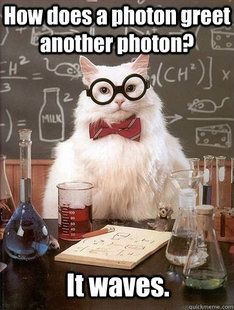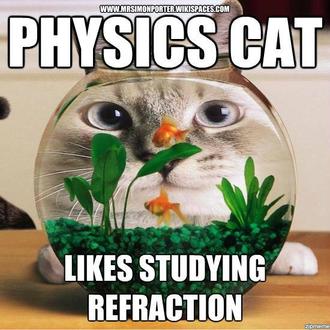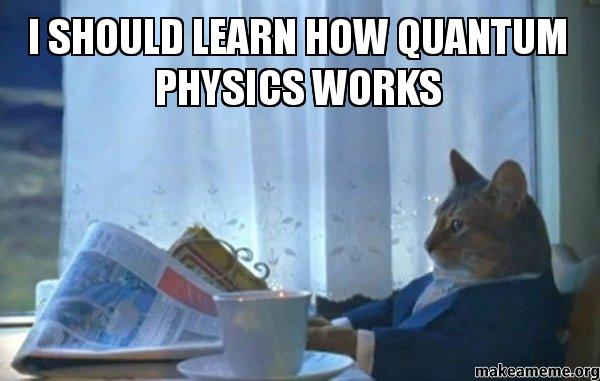
Optics
Optics
refers to the study of light, which is a very
interesting subject. Light particles have
wave-like behavior, but also displays
particle-like behavior. [Gif from imgur.com]
Most modern physics describe light with the photon model. This means that instead of classifying light as a wave or a particle, it is classified as a photon, which is an entity that shows both wave- and particle-like traits. Quantum physics are a heavy topic, but we’ll try to break down why the behavior of light has to be described this way.  [Image from
s-media-cache-ak0.pinimg.com]
Wave Properties:
 [Image from
mrsimonporter.wikispaces.com]
Particle Properties:
 [Image
from media.npr.org]
In
summary, photons can be described as having wave-particle
duality, properties of waves and
particles. In quantum physics, a photon is
referred to as the elementary particle of
light, or a quantum of light.
 [Image from
makeameme.org]
|
| Homepage |
| States of
Matter |
| Entropy |
| Optics |
| Relativity |
| Resources |